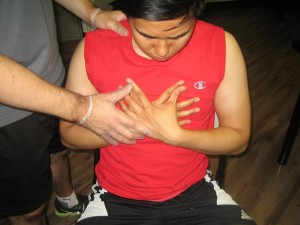Rapid shallow breathing or tachypnea occurs if an individual takes in more breaths than normal in a given minute. Once an individual rapidly breathes, it is sometimes called as hyperventilation.
Tachypnea can be due to anything from a lung infection or even heart failure. It is vital to report this symptom to the doctor and seek prompt treatment to prevent any complications. It is vital to treat tachypnea as a medical emergency especially if the individual experiences it for the first time. Call for emergency assistance if the individual experiences any of the following:
- Lightheadedness
- Bluish/grayish tint to the skin, lips, nails or gums
- Fever
- Chest pain
- Rapid breathing that becomes worse
- Chest that caves in while breathing
It is important to note that tachypnea can be due to various conditions. The right diagnosis from a doctor can determine the exact cause.
Possible causes of tachypnea

The rapid shallow breathing can be triggered by various causes such as the following:
- Infections – the infections affecting the lungs such as bronchiolitis or pneumonia can lead to difficulty breathing which leads to short and rapid breaths. Once these infections worsen, the lungs can be filled with fluid.
- Blood clots – a pulmonary embolism is a blood clot in the lungs which leads to hyperventilation along with coughing, chest pain and rapid or erratic heart rate.
- Choking – when an individual is choking, an object partly or fully blocks the airway. If the individual could not breath at all, the breaths are not deep or relaxed.
- Asthma – hyperventilation is an indication of an asthma attack that can lead to rapid and shallow breathing among children
- Diabetic ketoacidosis – this is a serious condition that develops if the body could not generate enough insulin which leads to tachypnea
- Chronic obstructive pulmonary disease (COPD) – this is a prevalent lung condition that includes emphysema or bronchitis
- Anxiety attacks – this is a physical response to anxiety or fear
Management for tachypnea
Remember that the treatment tends to vary depending on the exact cause of the breathing issue.
Lung infections
The treatment for tachypnea due to an infection involves an inhaler that opens up the airways such as albuterol along with antibiotics to clear up the infection.
Anxiety disorders
If an individual experiences tachypnea as a symptom of an anxiety attack, the doctor might recommend a combination of therapy and anti-anxiety medications.
Chronic conditions
Certain chronic conditions such as COPD and asthma will not go away but with the help of treatment, tachypnea can be minimized. The treatment usually includes inhalers, prescription medications and oxygen therapy in severe cases.
